
This recipe comes from Pierre Nury via Daniel Leader's Local Breads, this is the second recipe I've made from the book (and it went a lot better than the first, which I still need to write up). I picked this recipe because it looked like it would make cute little loaves, and one of my friends is a fan of blue cheese. It had also been a while since I made a bread with a significant amount of rye flour, and that one turned out a bit brick like. I had some trepidation starting this recipe because I had heard of many errors in the book (and experienced some of them in the first bread I made), but I didn't notice any glaring errors in this recipe.
This recipe is built on a stiff levain, which I definitely prefer, seem to get better results from it, and I already keep a stiff levain so no conversion needed. Once you have the starter build for the recipe you mix the bread flour (55%) and fine ground rye flour (45%) with the water and let the mixture autolyse for 20 minutes. After the autolyse the small portion of starter is incorporated into the dough and the salt sprinkled on top and kneaded in.


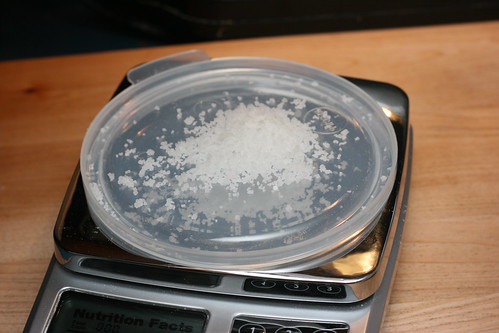
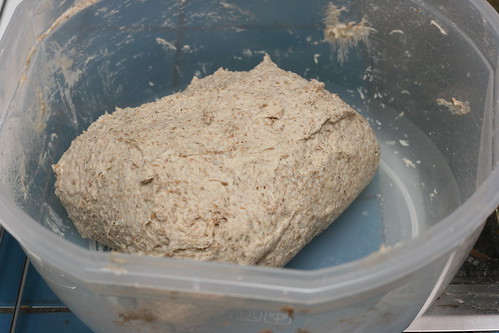
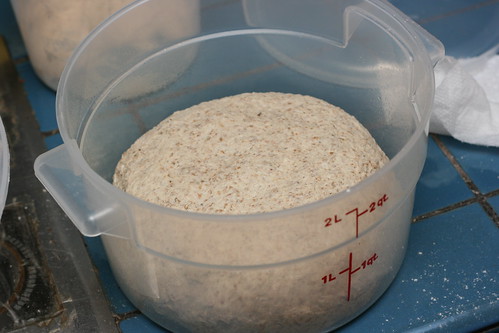
This was a dense and very sticky dough to knead, thanks mostly to the rye flour I would imagine. The new (large) cutting board I got to handle dough on seems to help make the sticky doughs easier to handle than the plastic mat I used previously though, I was able to get this dough kneaded well enough with minimal flour use. I wasn't expecting a huge rise with the dough, both from comments seen online and experience with how my starter likes to rise, and it was good I wasn't expecting much!
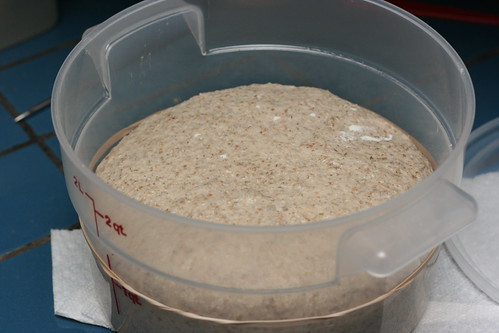
I couldn't find the cheese called for in the recipe locally so I picked out an interesting looking selection at my local Whole Foods, Hook's Cheese Company Blue Paradise:

It was a little tricky getting the 4 separate pieces of dough evenly sized because the dough was so sticky! A little dusting of flour to control that stickyness for weighing and I got my 4 roughly equal pieces, and preshaped them into little rectangles (it called for squares, but the dough didn't want to go that way). Each of the 4 got stuffed with cheese, rolled up into little loaves, and put in the loaf pans. I was initially surprised that this recipe calls for scoring before proofing, but I guess that helps it to open up a bit more to make a cavity for the cheese you place on top.

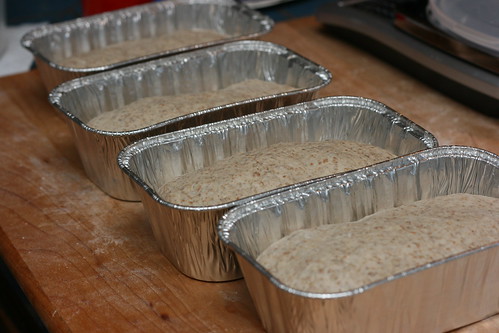
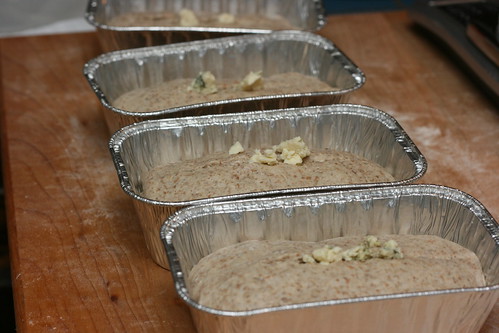
When it came time to bake, I changed up the instructions a bit. I preheated the oven to 500, used nearly boiling water instead of ice cubes, and then turned the heat down to the suggested temperature as soon as the loaves were in the oven (the ice cubes just don't work so well for me). These loaves smelled really great as they were baking!
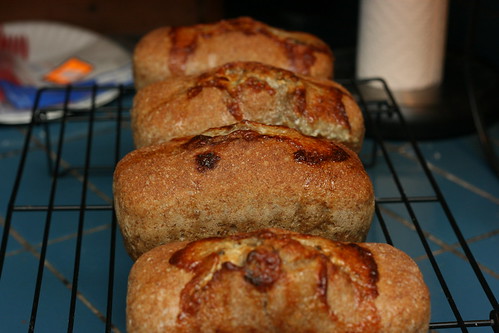
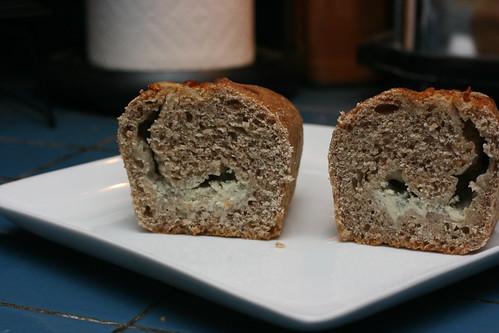
After they had cooled a little bit, I brought one out to show the person I had baked them for more intending just that he could see and smell it, but it must've smelled really good because he took a big bite out of it! It was really good warm out of the oven like that, I also made a few slices into crostini the other day, topped them with pesto and chicken!























